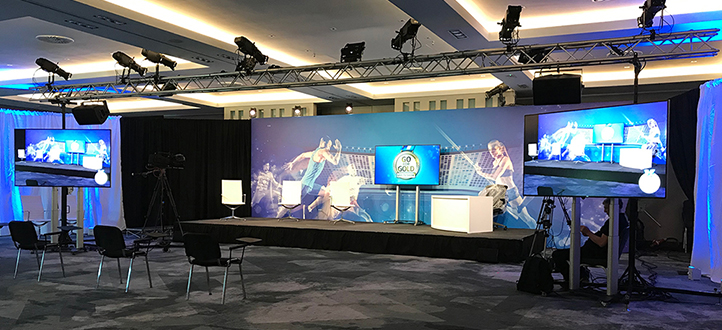Benefits of LED Display Walls Over Conventional Projection Technologies in Modern Graphic Displays
Wiki Article
LED video walls have grown progressively popular in various settings, such as schools, businesses, and entertainment locations. These advanced visual technologies offer numerous advantages over traditional projection systems. Recognizing these advantages can help companies make informed decisions about their display needs. This article will explore the main advantages of LED display screens, including brightness, image quality, flexibility, upkeep, and energy efficiency.
One of the key important advantages of LED video walls is their brightness. Light Emitting Diode tech produces vibrant and bright pictures that can be easily viewed in various illumination environments. Unlike conventional projectors, which can have difficulty in brightly lit environments, LED display walls maintain their clarity and hue accuracy even in bright spaces. This makes them ideal for external events or locations with big openings. The elevated brightness levels ensure that the material displayed is consistently visible, making it simpler for audiences to interact with the information being presented.
In furthermore to brightness, LED display screens provide superior visual quality. They offer greater definition and better color rendering compared to conventional projection technologies. This means that images and footage displayed on an Light Emitting Diode wall appear sharper and more detailed. The pixel concentration of Light Emitting Diode displays allows for close viewing without losing clarity, which is particularly important in settings like exhibition fairs or conferences where viewers may be nearby to the screen. Furthermore, LED tech can produce richer blacks and more vibrant colors, enhancing the complete aesthetic experience.
Flexibility is another important benefit of LED display screens. These technologies can be arranged in various sizes and shapes to fit varied areas and design requirements. Unlike conventional projection systems, which require a specific spacing from the screen to function correctly, Light Emitting Diode display screens can be set up in a range of environments. They can be curved, arranged, or even used in innovative arrangements to create unique display exhibits. This adaptability allows organizations to customize their display exhibits to suit their specific requirements, making Light Emitting Diode blog here display walls a versatile option for any setting.
Upkeep is also a critical factor when comparing LED display walls to conventional projection systems. Light Emitting Diode screens generally require fewer upkeep over time. Conventional projectors often need bulb replacements and regular cleaning to maintain peak functionality. In comparison, LED tech has a greater duration and does not require regular replacements. This lowers inactivity and upkeep expenses, making LED video walls a more cost-effective option in the long-term future. Organizations can focus on their presentations rather than concerned about the maintenance of their display systems.

Finally, power conservation is an important consideration for many organizations. LED video screens consume less power compared to conventional projector technologies, which can lead to substantial reductions on power costs. This is particularly advantageous for companies and locations that operate displays for long periods. Additionally, the lower power usage of Light Emitting Diode tech contributes to a lowered environmental impact, making it a more eco-friendly option. By selecting Light Emitting Diode display screens, companies can benefit from premium display displays while also being mindful of their energy use and environmental footprint.
In summary, LED display screens offer many benefits over traditional projector technologies. Their luminosity, visual clarity, adaptability, low maintenance needs, and energy efficiency make them an excellent option for modern display screens. As innovation continues to progress, LED video walls are likely to grow even more common in multiple settings, providing organizations with the tools they require to efficiently convey and interact with their audiences.